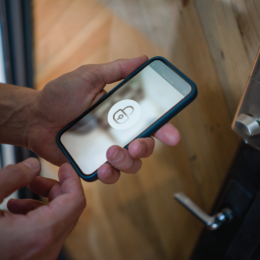
File photo illustration by Richard G. Biever
Spending a few hundred dollars on an energy audit now could save you thousands of dollars over time.
A home energy audit is a detailed assessment of your home that can give you a roadmap for future energy-related investments:
• What efficiency investments will be most effective in reducing your energy bills?
• Why might some areas of your home be too hot or too cold at times?
• Would a new furnace, air conditioner and/or rooftop solar system be appropriate? If so, what size? And what complementary measures will help these large investments work most efficiently?
Online audit tools can give you a basic understanding of how your home compares to similar ones. However, a qualified and professional home energy auditor can use his or her experience and high-tech tools to provide a thorough report of your home’s challenges and opportunities. A professional audit can range from a quick, visual walk-through to a more comprehensive, more informative — but more expensive — assessment.
Energy audits require an examination of the building envelope (attic, floor, and exterior walls) and the energy systems in the home, such as the water heater, air conditioner and furnace. Follow the auditor during the inspection, and ask questions so you can understand where the problems are, what you can address yourself and where you may need further professional help.
The auditor may analyze your recent energy bills to determine what your energy is used for and if use has recently changed. Finally, the auditor will ask about the energy use behaviors of those who live in the home.
For example, is someone home all day, or does everyone leave for work and school? A resident’s habits can make a big impact on the energy bill. If you go from being a household with two working adults to one with a new baby and an adult home most of the day, your energy use is going to go up.
An auditor may do some or all of the following tests:
• Blower door test: Windows are often the suspected cause for air leaks, but there are usually larger and less obvious sources. A blower door test measures how airtight your home is and identifies where the air leaks are.
• Duct blaster: Ducts move the warm and cool air around your home; duct testing can measure whether your ducts are leaking.
• Thermographic imaging: This is one way to identify where more insulation is needed. Infrared images show “cold” or “hot” spots in a home’s envelope. Identifying where more insulation is needed is a key component in energy audits — too little insulation will make you use more energy than needed. Adding more can provide a quick return on investment.
Following the assessment of your home, the auditor will analyze the information and make recommendations on what systems could be upgraded or what behavior changes you can make to reduce energy use and improve comfort. If you follow your auditor’s recommendations, you could lower your energy bill 5 to 30 percent, or more!
Your electric co-op can help you get started with your audit. Most co-ops offer audits or will provide a list of qualified energy auditors in the area. Being home during the audit is a great opportunity to learn what makes your home tick and how you can make it even better.
For more information, please visit: www.collaborativeefficiency.com/energytips.



